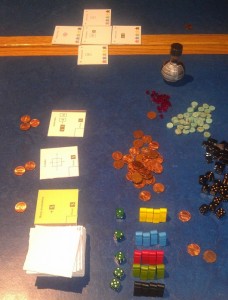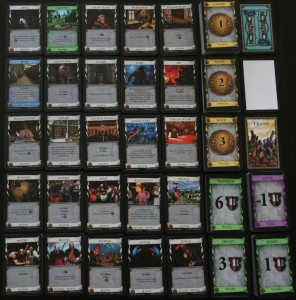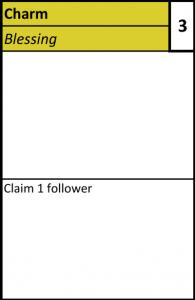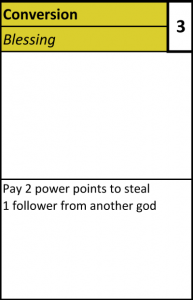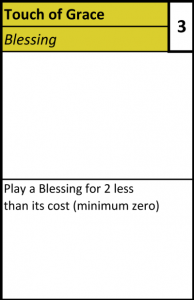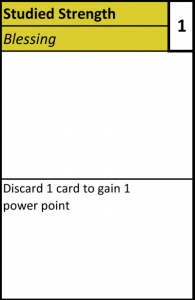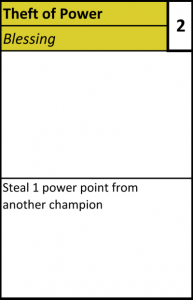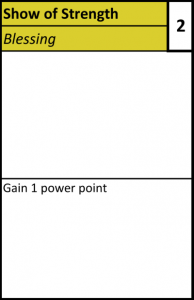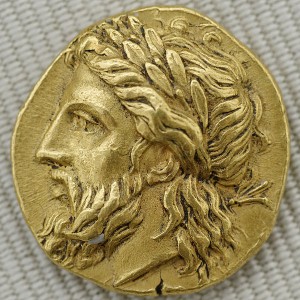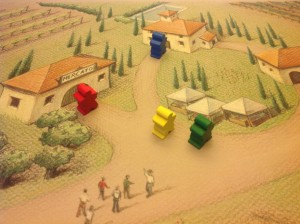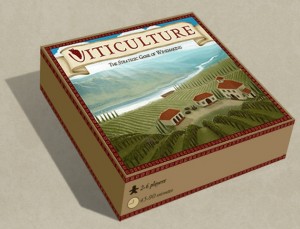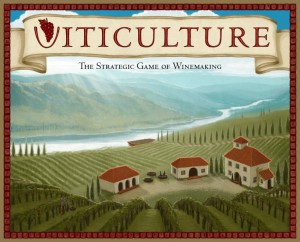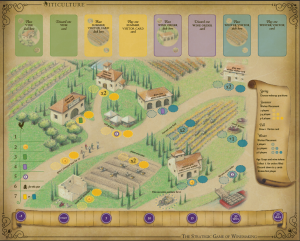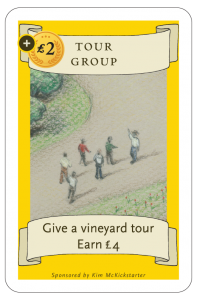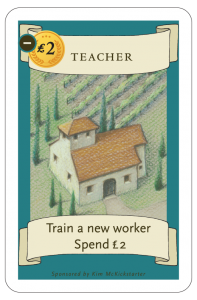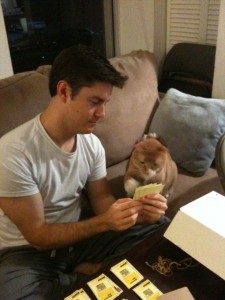Those of you who follow me on Twitter have probably seen some mentions in the past week of a new game I’m working on. My first game, Chaos & Alchemy, has been very successful (by my standards) and is in the process of moving toward publication by Game Salute.
My second design, Gods & Champions, was my NaGaDeMon project this past November, but it ended up not exciting me all that much, and I set it aside.
My third design, which I’m tentatively calling Alchemy Bazaar for now, is rolling along and I’m starting to playtest the alpha version. As of this writing, I’ve run three playtest games, and each one was better than the last.
Alchemy Bazaar is shamelessly inspired by one of my favorite games of the past year, Lords of Waterdeep. I love worker placement games (Agricola is still my all-time favorite game), and I really liked the buildings in Lords of Waterdeep. So, I decided to make a game that essentially takes those buildings and makes a whole game out of them.
In addition to buying buildings and doing worker placement, I also wanted to have the placement of buildings matter, somewhat like Alhambra but not quite. I wanted the players to build a common board, and then be able to not just place their workers, but also to move them around.
How does it work?
The game progresses through a series of rounds, each of which has two phases.
In the first phase the players are landlords of the bazaar. Each player gets to choose from three available tiles (representing shops that want to set up in the bazaar) and puts one on the board. The player collects some coins from the shop proprietor, who is eager to get a spot in the bazaar.
In the second phase, players get to move their tokens around the board, shopping in the bazaar. They’re trying to collect reagents (gems, metal and spirits) to complete alchemical formulas (similar to Lords of Waterdeep quests), which will give them knowledge. The player with the most knowledge at the end of the game wins.
The part I’m experimenting with here is the placement/movement rules for “workers” (alchemists and their apprentices). You can start by putting your token anywhere you want and using that shop. Then, you may pay a coin to move to an adjacent shop and use it. Then, you may pay two coins to keep going, then three, and so on. In the next round, your token starts wherever it ended the last round, and you begin your shopping by moving to an adjacent tile, then paying to keep going if you like.
My expectations
Unlike Chaos & Alchemy, I didn’t sit down and immediately create the game as soon as I had the general notion. I noodled on this one for a while. When I did start to create it, I expected that it would more or less immediately break down in play because of all the moving parts (tiles, formulas, actions, four currencies, movement on the board, etc.). I expected that I’d try an aborted game with my wife, then fix the fundamental flaws, then try again in a week, etc.
Happily, that hasn’t been the case at all. Much like Chaos & Alchemy, this one has been fun from the start. It’s only been played three times to this point, but those are some very encouraging games. The most recent game involved me flagging down a couple of strangers at the local game store, playing a game with them, seeing them have a great time, and only after the fact learn that they’re not even board gamers. That’s a very encouraging development!
Interestingly, I’m finding out how much fun good game components can be. After my first game, I replaced the Lords of Waterdeep cubes I had been using with some cool beads to represent the reagents. After my second game, I printed the tiles onto sticker labels and put them on matte board to create actual tiles instead of the cardstock I had been using. Such an improvement!
Next steps
I haven’t yet gotten to try the game with my favorite playtester, and I’m sure he’ll have some great suggestions for me. Also, the Formula and Action cards haven’t gotten a whole lot of thought yet, and I’m sure I’ll be able to refine them to include more of the fun stuff. But so far so good!
Watch the blog for future updates. And who knows? Maybe I’ll have a second board game out in the wild before long!
-Michael the OnlineDM

